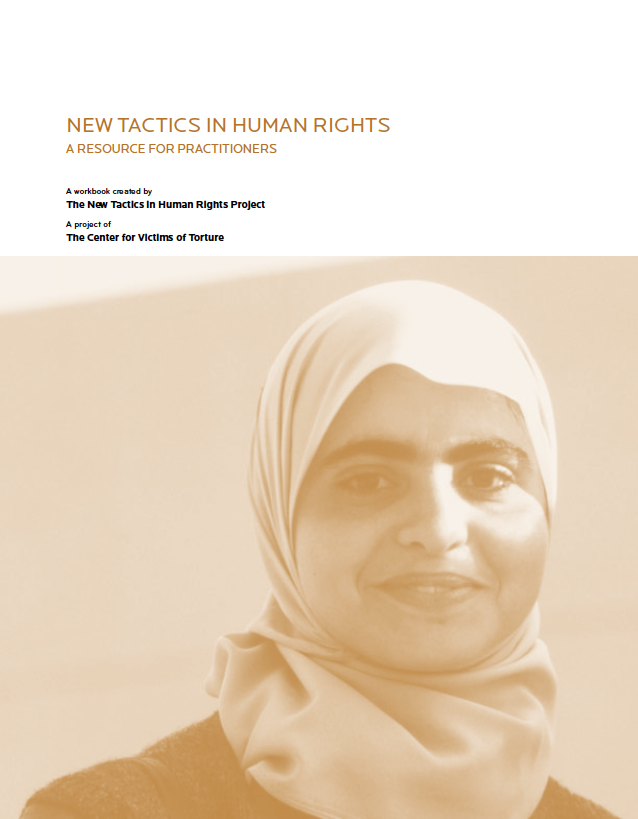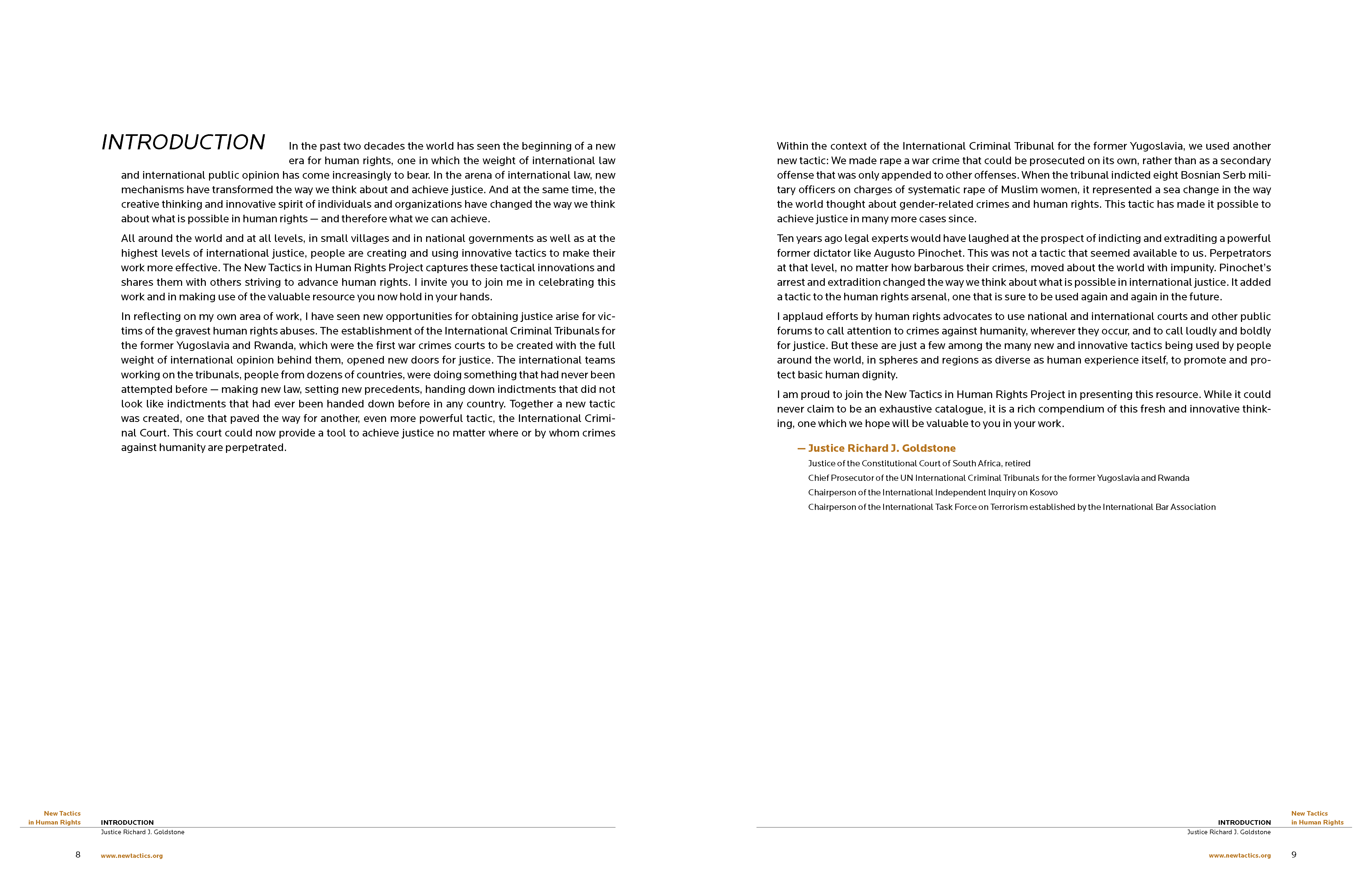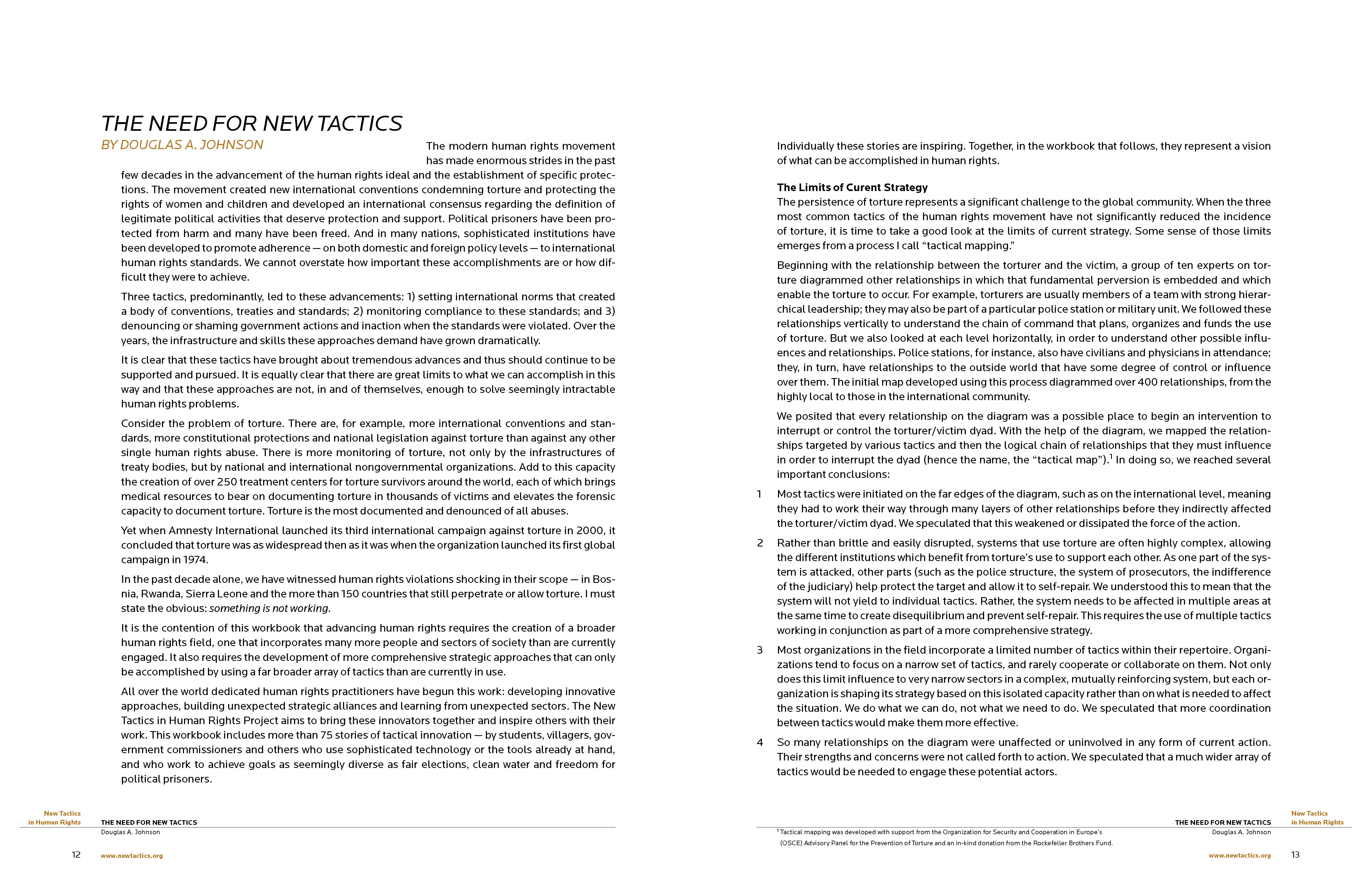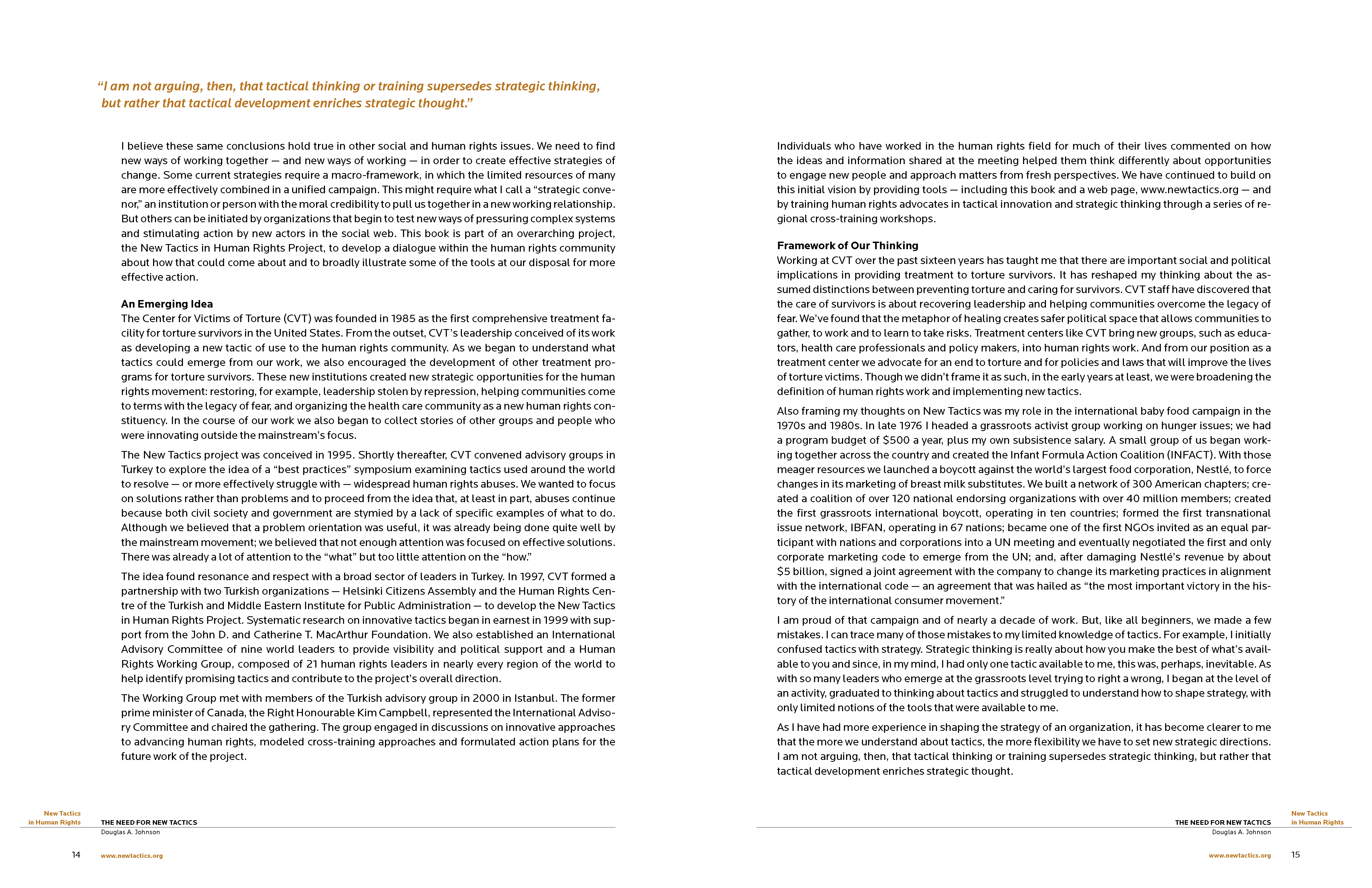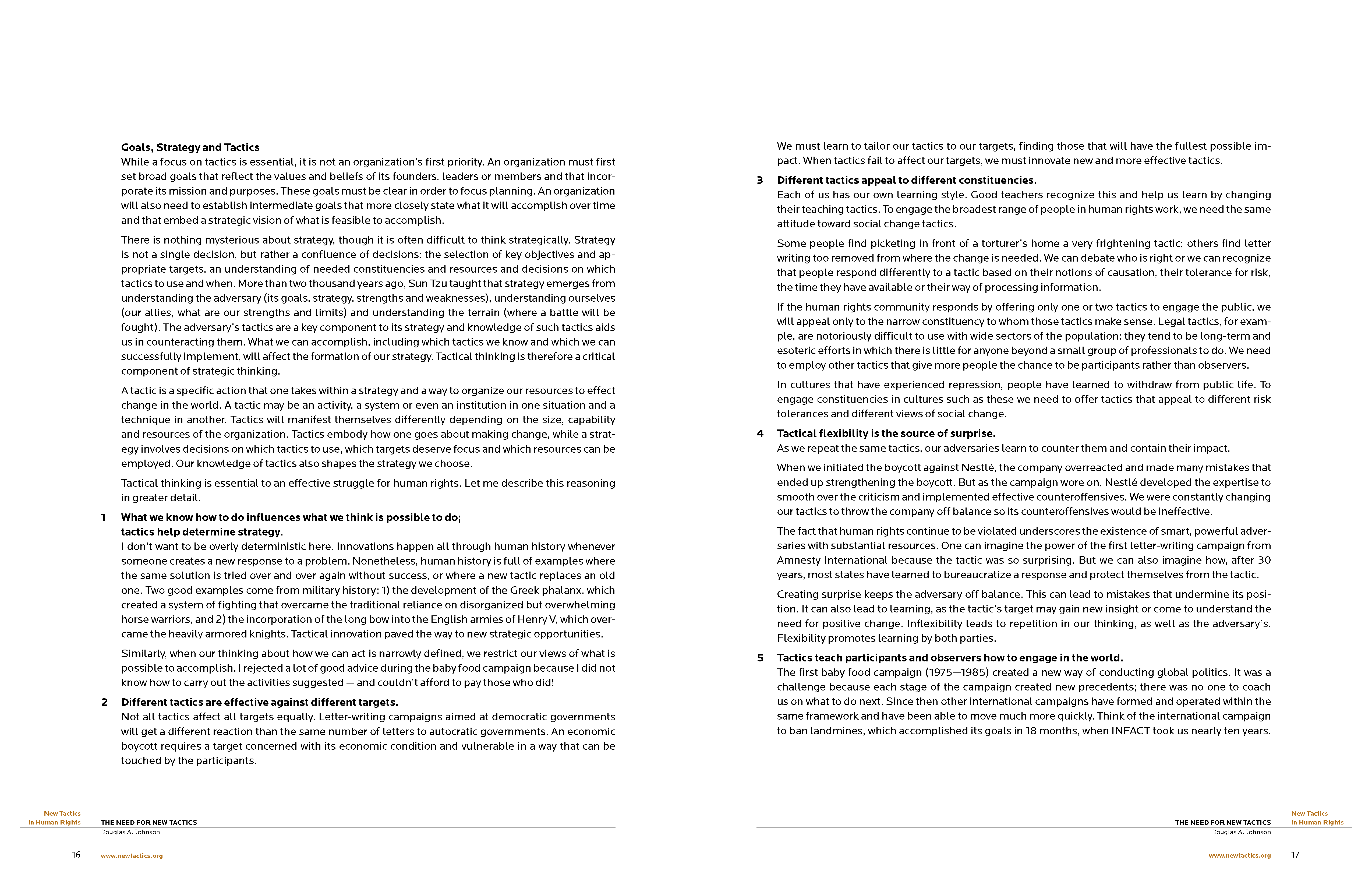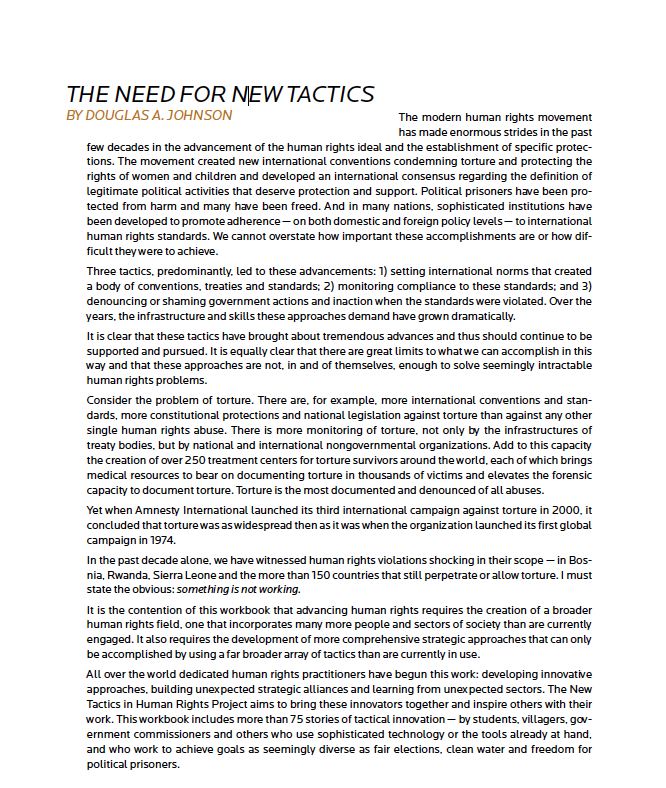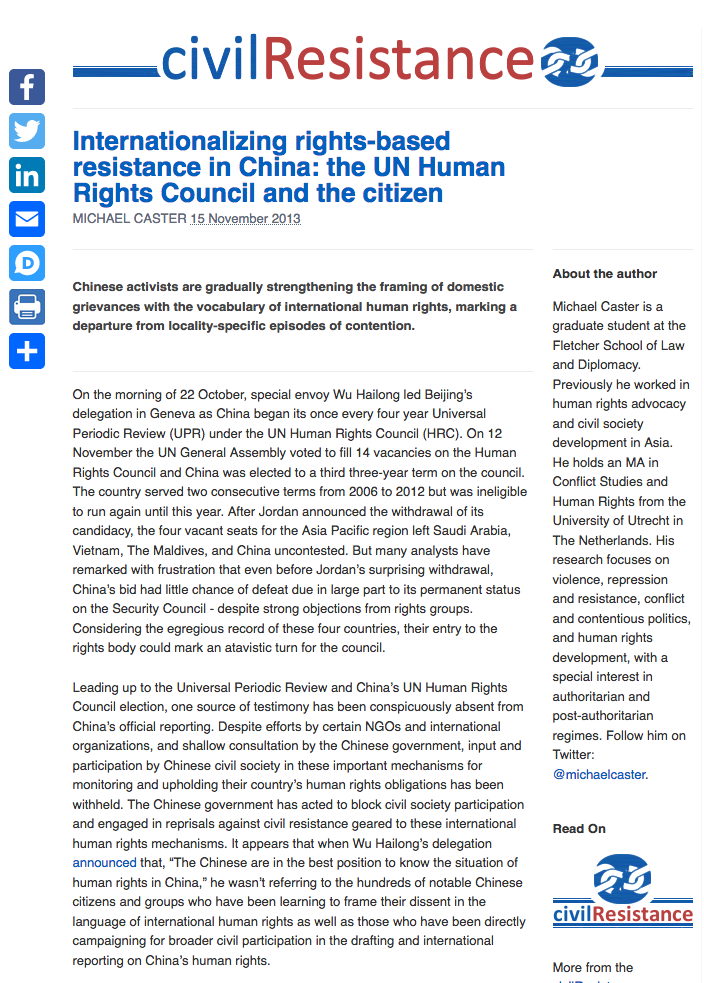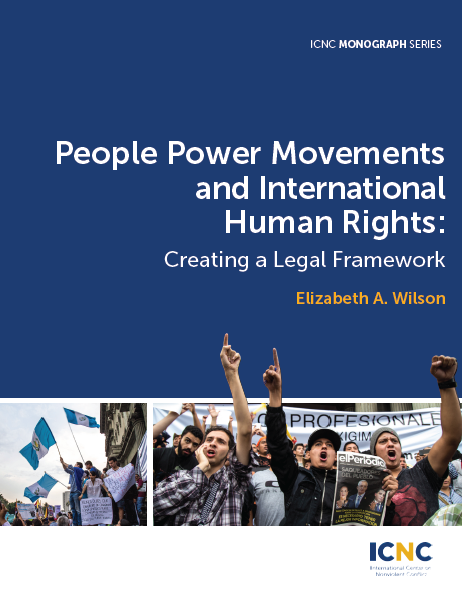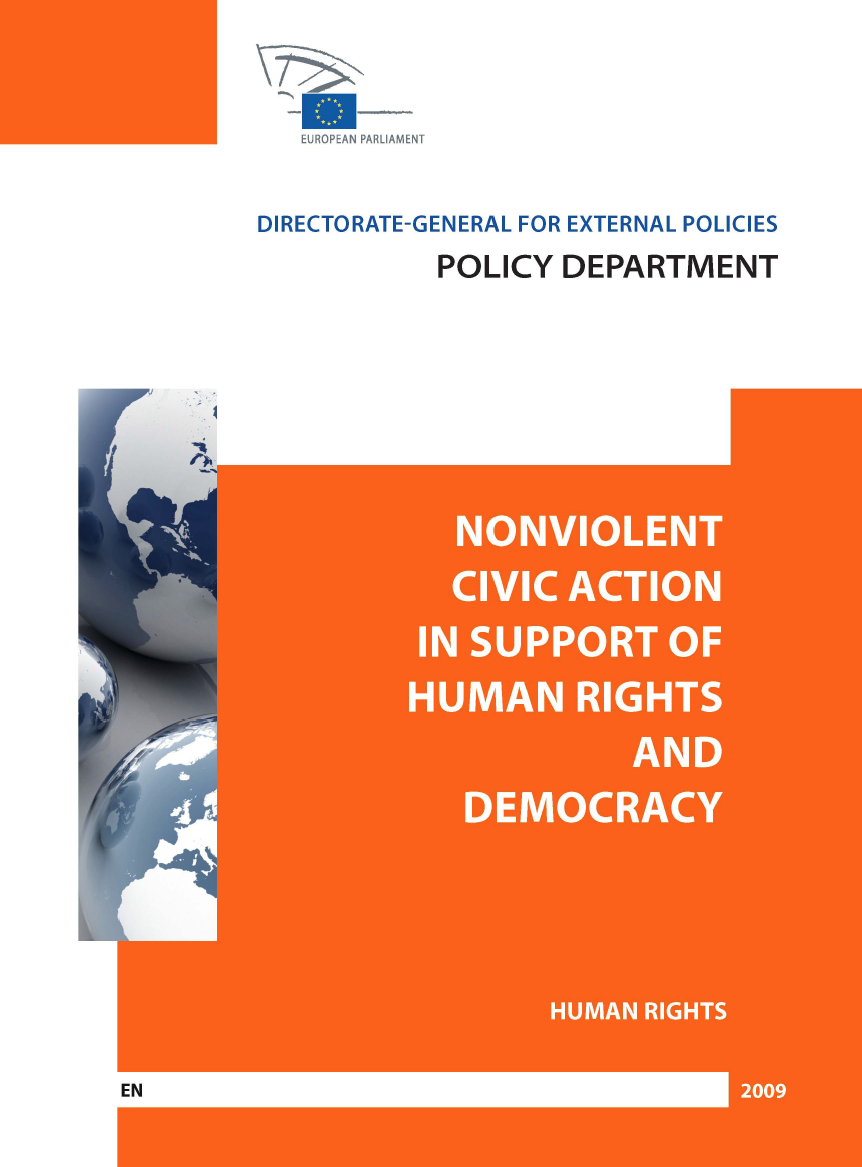New Tactics in Human Rights: A Resource for Practitioners
All around the world and at all levels, in small villages and in national governments as well as at the highest levels of international justice, people are creating and using innovative tactics to make their work more effective. The New Tactics in Human Rights Project captures these tactical innovations and shares them with others striving to advance human rights. I invite you to join me in celebrating this work and in making use of the valuable resource you now hold in your hands.
Ten years ago legal experts would have laughed at the prospect of indicting and extraditing a powerful former dictator like Augusto Pinochet. This was not a tactic that seemed available to us. Perpetrators at that level, no matter how barbarous their crimes, moved about the world with impunity. Pinochet’s arrest and extradition changed the way we think about what is possible in international justice. It added a tactic to the human rights arsenal, one that is sure to be used again and again in the future.
I applaud efforts by human rights advocates to use national and international courts and other public forums to call attention to crimes against humanity, wherever they occur, and to call loudly and boldly for justice. But these are just a few among the many new and innovative tactics being used by people around the world, in spheres and regions as diverse as human experience itself, to promote and protect basic human dignity.
I am proud to join the New Tactics in Human Rights Project in presenting this resource. While it could never claim to be an exhaustive catalogue, it is a rich compendium of this fresh and innovative thinking, one which we hope will be valuable to you in your work.
— Justice Richard J. Goldstone, Justice of the Constitutional Court of South Africa, retired Chief Prosecutor of the UN International Criminal Tribunals for the former Yugoslavia and Rwanda Chairperson of the International Independent Inquiry on Kosovo Chairperson of the International Task Force on Terrorism established by the International Bar Association
A workbook created by The New Tactics in Human Rights Project — a project of the Center for Victims of Torture
March 2004
ISBN: 0-9759789-0-X
